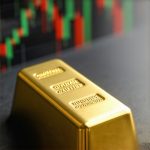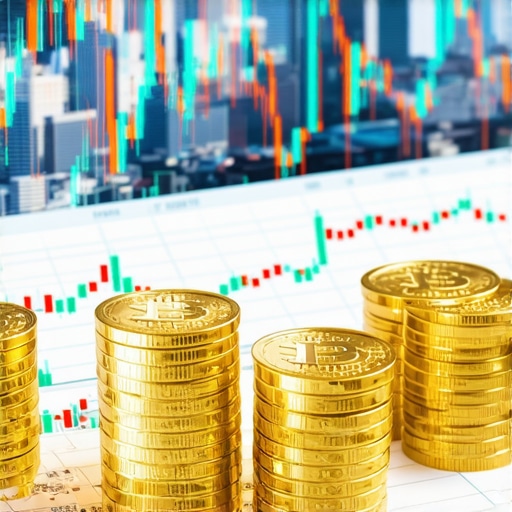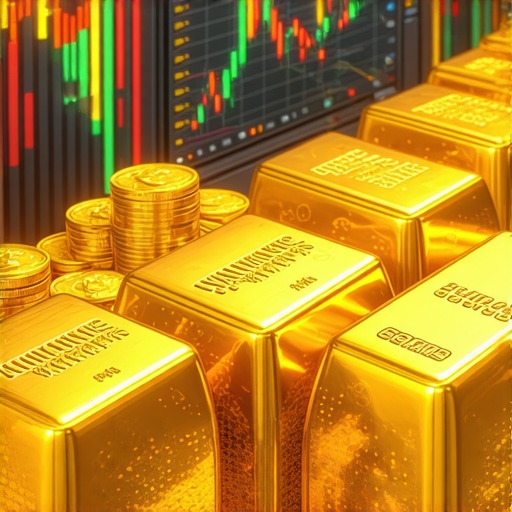Understanding the Key Factors Influencing Gold Prices
The future of gold prices is a topic that captivates investors, economists, and collectors alike. As a timeless asset, gold has been a safe haven during economic uncertainty and inflation. However, its price is influenced by a myriad of factors that can shift rapidly. This article explores the key factors that are likely to impact gold prices in the near future.
Global Economic Conditions
One of the most significant influences on gold prices is the state of the global economy. Economic stability often leads to lower demand for gold as an investment, while uncertainty drives investors toward this precious metal as a safe haven. For instance, during economic downturns or recessions, gold prices typically surge as investors seek to protect their wealth. Conversely, when the economy is performing well, gold often sees decreased demand. Keeping an eye on global economic indicators, such as GDP growth rates and employment statistics, is essential for predicting future gold price movements.
Central Bank Policies and Interest Rates
Central banks play a crucial role in the gold market. Their policies regarding interest rates can significantly impact gold prices. When interest rates are low, the opportunity cost of holding gold decreases, making it a more attractive investment. However, when rates rise, gold may lose its appeal as investors may prefer interest-bearing assets. Additionally, central banks hold substantial gold reserves, and their buying or selling activities can cause significant fluctuations in the market. Understanding how central bank policies affect gold prices is vital for investors looking to navigate the complexities of gold trading.
Inflation and Currency Fluctuations
Inflation is another factor that can influence gold prices. As the cost of living increases and the purchasing power of currency declines, gold often becomes a preferred hedge against inflation. Investors tend to flock to gold during periods of high inflation to preserve their purchasing power. Furthermore, fluctuations in currency values, particularly the U.S. dollar, can also affect gold prices. A weaker dollar typically makes gold cheaper for foreign investors, thereby increasing demand and driving up prices. Monitoring currency trends is essential for those interested in gold as an investment.
Geopolitical Tensions and Demand Trends
Geopolitical events and tensions can create volatility in the gold market. Conflicts, trade wars, and political instability often lead to increased demand for gold as a safe-haven asset. Investors are likely to turn to gold during times of uncertainty, pushing prices higher. Additionally, trends in gold demand from emerging markets, such as India and China, can significantly impact prices. As these countries continue to grow economically, their demand for gold jewelry and investment purposes is likely to rise, which can contribute to upward pressure on prices. Keeping abreast of geopolitical developments and demand trends in key markets will be crucial for predicting future gold price movements.
In conclusion, understanding the key factors influencing gold prices is essential for investors looking to make informed decisions. By analyzing global economic conditions, central bank policies, inflation, currency fluctuations, and geopolitical tensions, investors can better anticipate the future of gold prices. For more insights on how to navigate gold demand trends and investment strategies, check out our comprehensive guides on navigating gold demand trends and evaluating gold stocks.
Analyzing Gold Demand Trends and Their Impact on Prices
Understanding the dynamics of gold demand trends is essential for investors looking to capitalize on the potential of this precious metal. As we delve deeper into the factors affecting gold prices, it’s crucial to observe how shifts in demand can influence market behavior and price fluctuations.
Emerging Markets and Their Role in Gold Demand
Emerging markets, particularly in Asia, play a pivotal role in gold demand. Countries like India and China have historically been large consumers of gold, primarily for jewelry and investment. As these economies continue to grow, their appetite for gold is likely to increase. For instance, during festivals and wedding seasons, gold demand surges dramatically in India, often leading to spikes in global prices. Investors should monitor these trends closely to identify potential investment opportunities.
Investment Demand vs. Jewelry Demand
Gold serves two primary functions: as a form of investment and as a component of jewelry. While jewelry demand is typically stable, investment demand can be more volatile, responding quickly to economic conditions and investor sentiment. The rise of gold ETFs (Exchange-Traded Funds) has made it easier for investors to gain exposure to gold without the need to hold physical assets. Consequently, fluctuations in investment demand can significantly impact prices. Understanding the interplay between these two types of demand is crucial for forecasting price movements.
The Impact of Central Bank Purchases on Gold Demand
Central banks worldwide have become significant players in the gold market. Their purchases or sales of gold can influence prices dramatically. Central banks tend to increase their gold reserves during times of economic uncertainty, which can drive prices higher. For example, in recent years, many central banks have shifted towards accumulating gold as a hedge against inflation and currency fluctuations. Keeping an eye on central bank activities can provide valuable insights into future demand trends.
Technological Advances and Gold Demand
Technological advancements are also shaping the gold market. Innovations in electronics and renewable energy sectors have created new industrial applications for gold, boosting its demand. The utilization of gold in electronics, such as smartphones and computers, highlights the metal’s versatility and importance in modern technology. As industries evolve, understanding these technological trends can help investors anticipate changes in gold demand.
Global Economic Indicators and Their Effects on Gold Demand
Economic indicators such as inflation rates, employment figures, and GDP growth can significantly influence gold demand. For instance, during periods of high inflation, investors often turn to gold as a hedge, thus increasing its demand and price. Keeping track of economic reports and forecasts can provide investors with critical insights into potential shifts in gold demand. For more detailed analysis on how to interpret these economic indicators, check out our post on evaluating gold prices.
In conclusion, analyzing gold demand trends is vital for investors aiming to navigate the complexities of the gold market. By considering factors such as emerging market demand, central bank activities, and technological innovations, investors can better position themselves to make informed decisions. Understanding these trends not only aids in predicting price movements but also enhances overall investment strategy in the realm of gold.
Influence of Geopolitical Factors on Gold Demand
Geopolitical events can have a profound impact on gold demand as investors often turn to gold as a safe haven during times of uncertainty. Conflicts, trade wars, and political instability can lead to increased buying pressure on gold, driving prices higher. For instance, during heightened tensions in various regions, such as the Middle East or Eastern Europe, gold prices typically see a spike as investors seek security in tangible assets like gold. Monitoring global news and political developments can provide investors with insights into potential surges in demand, making it easier to strategize their investments accordingly.
Gold as an Inflation Hedge: Understanding Its Value
Gold has long been regarded as a reliable hedge against inflation. As inflation rates rise, the purchasing power of currency diminishes, prompting investors to allocate their wealth into gold. This trend is particularly relevant in economies experiencing rapid inflationary pressures. By investing in gold, individuals can protect their assets from losing value over time. Understanding how gold serves as a hedge can help investors make informed decisions when facing economic turbulence.
The Role of Speculation in Gold Markets
Speculation plays a significant role in driving gold prices. Traders and investors often buy gold based on predictions about future price movements, creating fluctuations in demand. Speculative trading can lead to short-term spikes in prices, which may not always align with fundamental market conditions. Investors should be aware of the psychological aspects of trading and how they can influence market dynamics. Keeping an eye on trader sentiment and market speculation can provide valuable insights into potential price movements.
Global Supply Chain Dynamics Affecting Gold Availability
The global supply chain for gold involves various factors, including mining outputs, recycling rates, and geopolitical constraints. Disruptions in any part of this chain can impact gold availability, ultimately affecting prices. For example, if major gold-producing countries face political unrest or natural disasters, the supply of gold can dwindle, leading to higher prices due to scarcity. Investors should stay informed about mining operations and global supply trends to anticipate potential market shifts. For more insights into mining stocks and their implications, check out our post on exploring gold mining stocks.
Future Trends in Gold Demand: What to Watch
As we look toward the future, several trends are emerging that could shape gold demand. The increasing popularity of sustainable and ethical investing may lead to a rise in demand for responsibly sourced gold. Additionally, advancements in technology could create new applications for gold, impacting its demand across various industries. Investors should remain vigilant and adaptable to these trends to maximize their investment potential. Engaging with expert analysis and market reports will provide valuable foresight into how these trends may unfold.
In summary, understanding the multifaceted factors influencing gold demand is key for investors aiming to navigate the complexities of the gold market. From geopolitical influences to speculative trading, the landscape is ever-evolving. By staying informed and agile, investors can better position themselves to capitalize on opportunities within the gold industry.
The Impact of Interest Rates on Gold Prices
Interest rates are a pivotal factor in determining the attractiveness of gold as an investment. When interest rates rise, the opportunity cost of holding non-yielding assets like gold increases, which can lead to decreased demand and lower prices. Conversely, when central banks lower interest rates, gold becomes more appealing as a store of value, often resulting in higher demand. Investors should closely monitor interest rate trends and central bank policies, particularly those of major economies, to assess their potential impact on gold prices. For more insights on how these economic factors play out, consider reading our article on central bank influence on gold prices.
Understanding Gold ETFs: Advantages for Modern Investors
Exchange-Traded Funds (ETFs) have revolutionized gold investment by providing an accessible and liquid way to invest in gold without the need to hold physical bullion. Gold ETFs track the price of gold and can be traded like stocks, making them a convenient option for investors looking to diversify their portfolios. These investment vehicles offer numerous advantages, including lower transaction costs, ease of buying and selling, and the ability to gain exposure to gold without the complexities of storage and insurance. To dive deeper into effective gold ETF strategies, refer to our guide on understanding gold ETFs.
Physical Gold vs. Gold Stocks: Making the Right Choice
Investors often face the decision of whether to invest in physical gold or gold stocks, each offering distinct advantages and risks. Physical gold can provide a tangible asset that serves as a hedge against inflation and economic turmoil. In contrast, gold stocks can offer greater potential for returns but come with increased volatility and risks associated with mining operations. Understanding the nuances of these investment options is crucial. For those interested in exploring the best gold stocks, our post on top gold stocks to watch provides valuable insights.
Gold Trading Techniques: Strategies for Success
Effective gold trading requires a solid understanding of market dynamics and strategic techniques. Investors should familiarize themselves with various trading strategies, including swing trading, day trading, and long-term investing approaches. Utilizing technical analysis and market indicators can provide insights into optimal entry and exit points. By developing a clear trading plan and risk management strategies, investors can navigate the gold market more effectively. For more advanced trading techniques, check out our article on top gold trading techniques.
In conclusion, navigating the intricacies of gold investment requires a comprehensive understanding of market factors, including interest rates, investment vehicles, and trading techniques. By staying informed and utilizing effective strategies, investors can enhance their chances of success in the dynamic gold market.
Frequently Asked Questions About Gold Investment
What factors influence gold prices?
The price of gold is influenced by a variety of factors including interest rates, inflation, currency strength, and geopolitical stability. When economic uncertainty rises, gold is often seen as a safe-haven asset, leading to increased demand and higher prices.
Is investing in gold a good hedge against inflation?
Yes, gold is traditionally viewed as a hedge against inflation. As the value of currency decreases, the price of gold tends to rise, preserving the purchasing power of investors. Historical data supports the effectiveness of gold in maintaining value during inflationary periods.
How do you invest in gold?
Investing in gold can be done through various means including purchasing physical gold like coins or bars, investing in gold ETFs, or buying shares in gold mining companies. Each method has its own advantages and risks, so investors should choose according to their financial goals and risk tolerance.
What are the risks associated with gold investment?
Investing in gold carries several risks, including price volatility, storage and insurance costs for physical gold, and the operational risks associated with gold mining stocks. Investors should conduct thorough research and consider their financial situation before investing.
How do gold ETFs work?
Gold ETFs are investment funds that track the price of gold and can be traded on stock exchanges. They allow investors to gain exposure to gold prices without owning physical bullion. Gold ETFs typically have lower management fees than mutual funds and provide liquidity, making them a popular choice for investors.
Can gold be part of a diversified investment portfolio?
Absolutely! Gold can serve as a diversification tool in an investment portfolio. Its price movements often differ from those of stocks and bonds, helping to reduce overall portfolio risk. Including gold can enhance returns and provide stability during market downturns.
What is the best way to store physical gold?
Physical gold should ideally be stored in a secure location, such as a safe deposit box at a bank or a home safe that is fireproof and waterproof. It’s important to ensure that the storage method chosen does not incur excessive costs that could diminish the investment returns.
How do I evaluate gold mining stocks?
When evaluating gold mining stocks, consider factors such as the company’s production levels, cost structures, management expertise, and the geopolitical stability of the regions in which they operate. Additionally, analyze financial health through metrics like earnings per share (EPS) and cash flow.
What is the historical performance of gold as an investment?
Historically, gold has maintained its value and provided a hedge against inflation over the long term. While it has experienced periods of price decline, it has also demonstrated significant price increases during economic downturns, making it a reliable investment in uncertain times.
How can I stay updated on gold market trends?
Investors can stay updated on gold market trends by following financial news outlets, subscribing to market analysis reports, and utilizing resources from reputable financial websites. Engaging in online forums and following gold analysts on social media can also provide valuable insights.
Authority Resources for Gold Investment
For those looking to deepen their understanding of gold investment and market dynamics, several authoritative resources are invaluable. Consider the following:
- Kitco News – A leading source for precious metals news and information, providing up-to-date market data and analysis.
- World Gold Council – The global authority on gold, offering comprehensive research, insights, and guidelines on gold investment.
- Investopedia Gold Investing – An extensive resource for learning about gold investment strategies, market trends, and the mechanics of investing.
- Bloomberg Commodities – Offers market data and news on commodities, including gold, helping investors make informed decisions.
- MarketWatch Gold Futures – Provides live price quotes, market analysis, and news on gold futures.
Conclusion
In summary, investing in gold requires a thoughtful approach, considering various market dynamics, investment vehicles, and strategies. By understanding the impact of interest rates, the advantages of gold ETFs, and the nuances between physical gold and gold stocks, investors can make informed decisions that align with their financial objectives. Staying updated through reputable resources and employing effective trading techniques can significantly enhance your chances of success in the gold market. Remember, gold remains a time-honored investment, serving as both a hedge against inflation and a store of value amid economic uncertainty.











The article’s breakdown of how global economic conditions directly influence gold prices really resonated with me. I’ve noticed during the last recession how gold prices spiked as investors sought stability amidst market turmoil. What struck me as particularly insightful was the emphasis on monitoring central bank policies—not just interest rates but their gold reserve activities. This often gets overlooked, but central banks buying or selling gold can quickly shift market dynamics. I’ve also been curious about the interplay between inflation and currency fluctuations; a weakening dollar making gold cheaper internationally is a nuance that’s essential for anyone investing globally. Given the complexities, I wonder how investors balance the unpredictability of geopolitical tensions with the steady long-term trends like emerging market demand? Has anyone found effective strategies to hedge against the short-term volatility caused by geopolitical conflicts while still capitalizing on growing demand in markets like India and China? I’d love to hear how others approach these dual aspects when considering gold investment decisions.